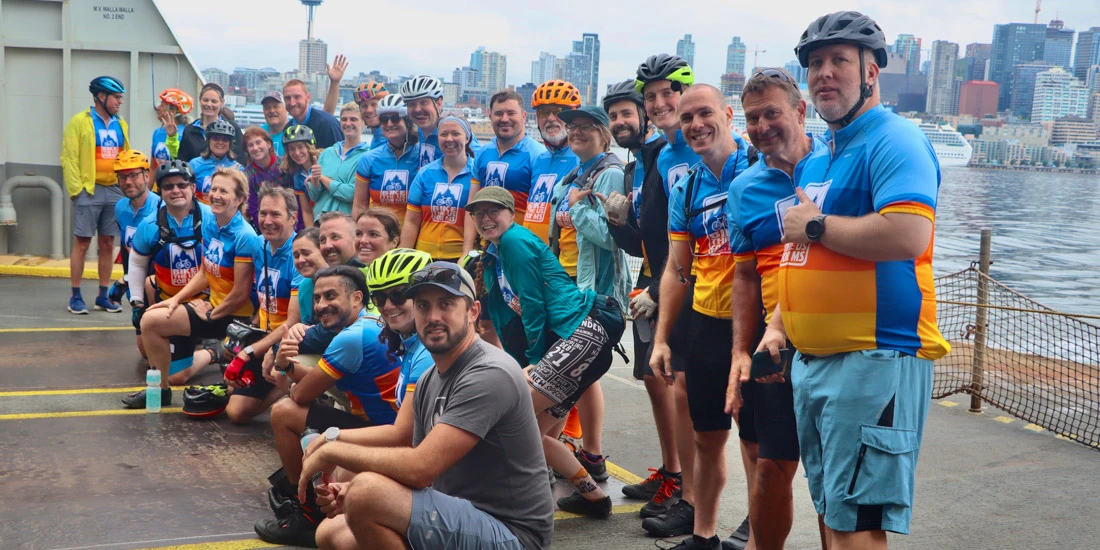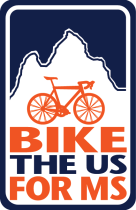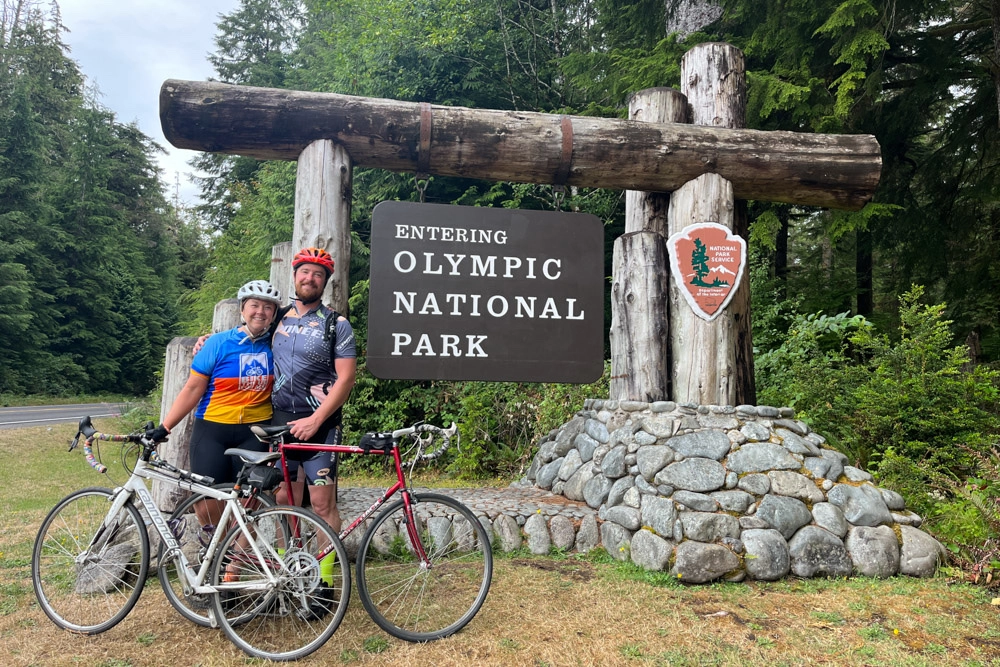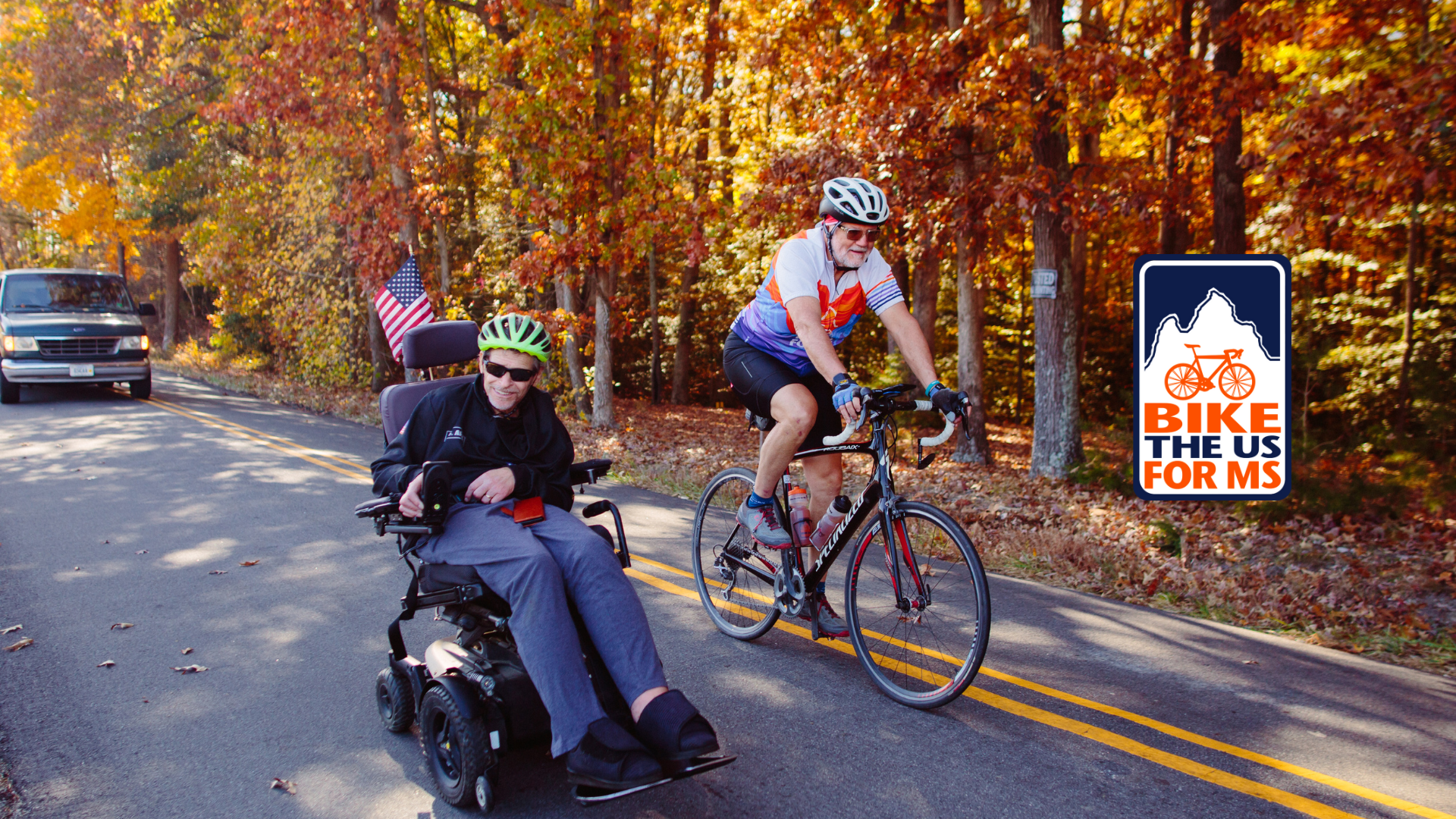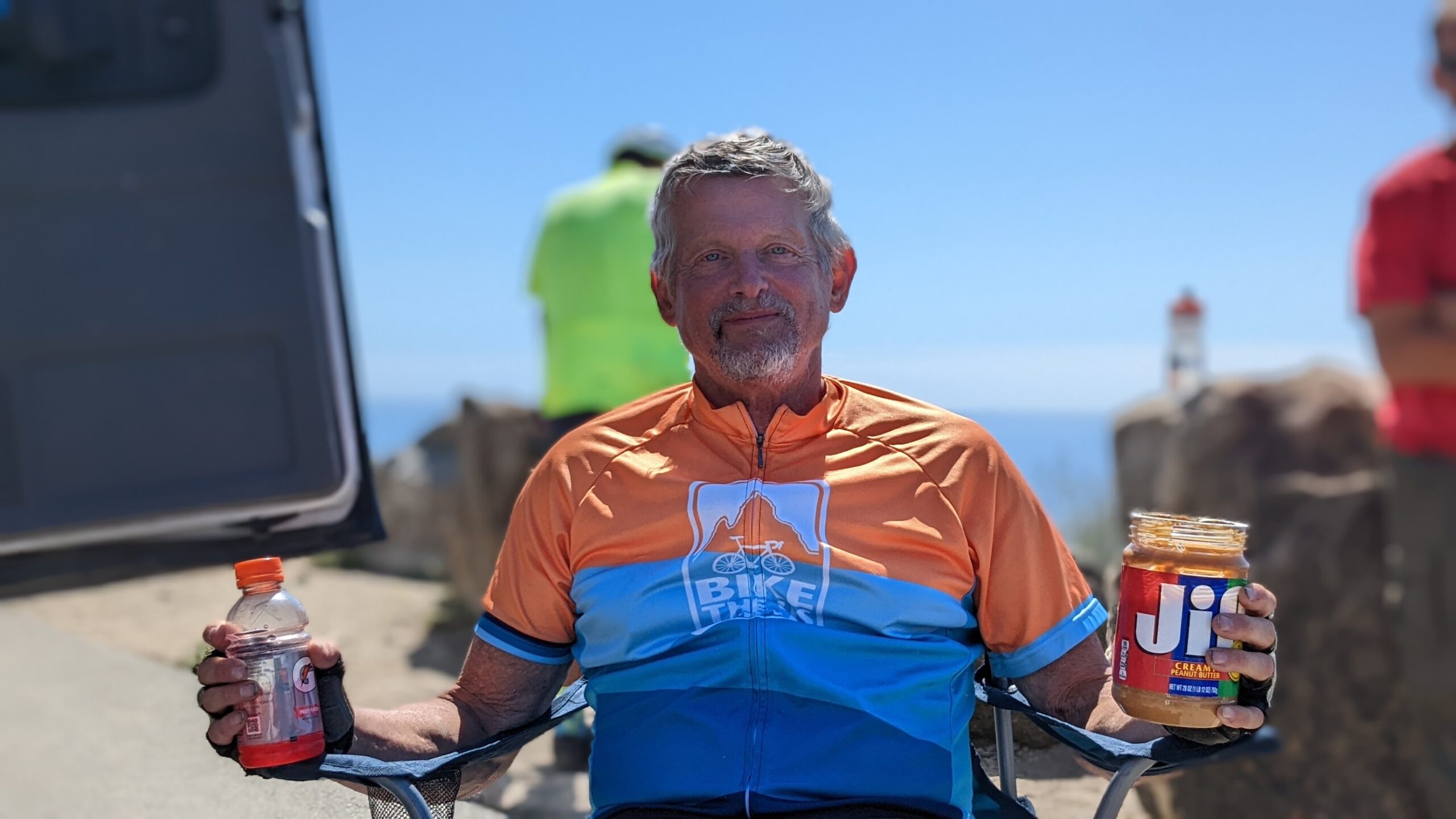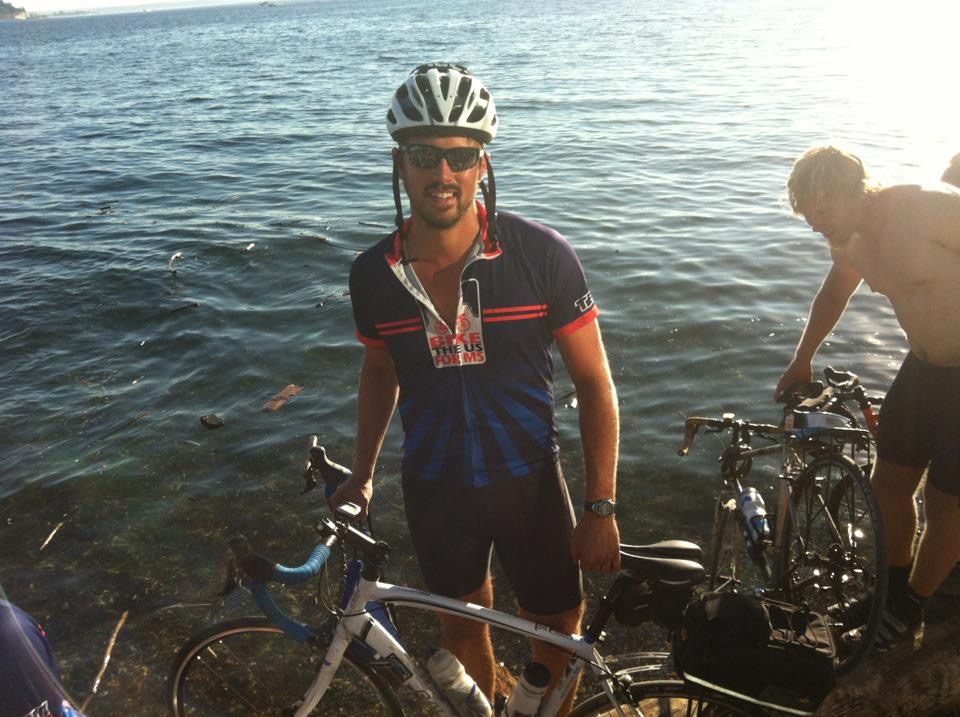Welcome to the Olympic Peninsula Loop, a cycling paradise nestled in the heart of Washington State. Renowned for its stunning natural beauty and diverse terrain, this loop offers an unforgettable experience for cyclists of all levels. Here, we delve into the allure of an Olympic Peninsula bike tour and explore the unique journey of biking in the PNW.
This comprehensive guide includes unmissable key destinations, a full 7-day itinerary, essential planning tips and tour options to simplify logistics.
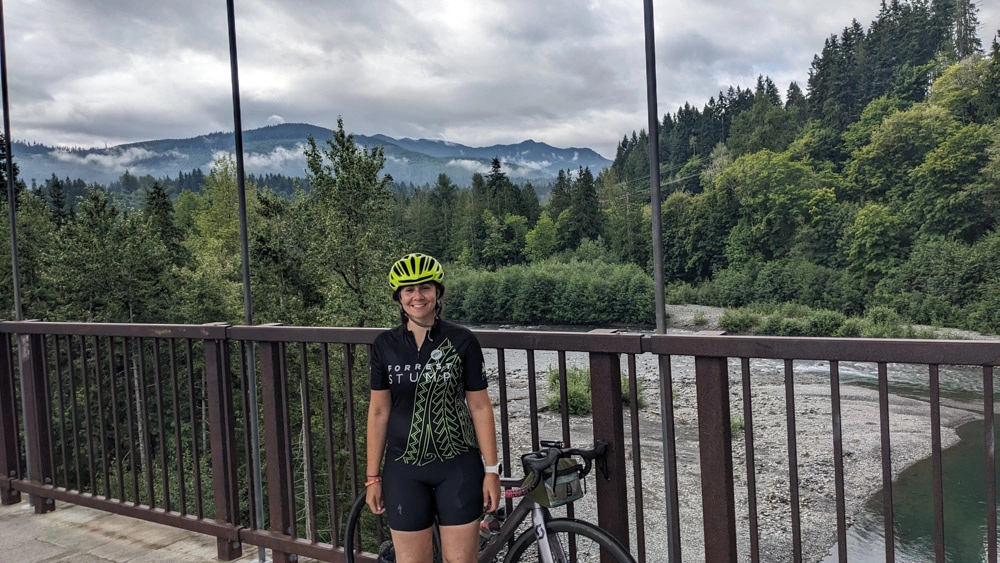
The Olympic Peninsula Loop Experience
Imagine a route that weaves through lush rainforests, along rugged coastlines, and over scenic mountain passes. The Olympic Peninsula Loop is this and more, providing a rich range of landscapes for an epic road trip or cycling adventure.
At a Glance: Key Destinations Along the Loop
The Olympic Peninsula Loop is a journey through diverse landscapes, from quaint towns to breathtaking natural wonders. Explore the historical charm of Port Townsend, experience the lavender fields of Sequim, marvel at the rugged beauty of Kalaloch Beach, and immerse yourself in the serene environment of Lake Quinault and Forks to name just a few!
- Port Townsend: A town rich in Victorian architecture and arts, Port Townsend is a hub for history and culture. Just outside the town, Fort Townsend Campground offers a wonderful camping experience.
- Sequim: Renowned for its vibrant lavender farms and the Dungeness National Wildlife Refuge, Sequim is a picturesque spot on the peninsula.
- Lake Quinault: Situated in the Olympic National Forest, this tranquil lake is surrounded by a beautiful rainforest.
- Kalaloch Beach: A coastal gem, Kalaloch Beach provides extensive Pacific Ocean vistas and is a perfect spot for observing diverse marine life and spectacular sunsets.
- Forks: Famous for its lush forests and as the setting for the Twilight series, Forks is a must-visit for its unique cultural and natural attractions.

Full 7-Day Itinerary for an Olympic Peninsula Bike Tour
Day 1: Seattle to Fort Townsend – Ferry plus 47 miles
Your adventure begins in the vibrant heart of downtown Seattle. Before heading out, seize the chance for a quick visit to the iconic Pike Place Market. It’s a perfect spot to soak up the local atmosphere and grab a coffee.
Next, cycle to the Seattle Ferry Terminal and embark on a scenic ferry journey to Bremerton across the stunning Puget Sound. On the bike, join the line for cars and then take the far left bike lane to purchase your $10 passenger ticket plus $1 bicycle charge. This ride offers breathtaking views and a refreshing start to your journey.
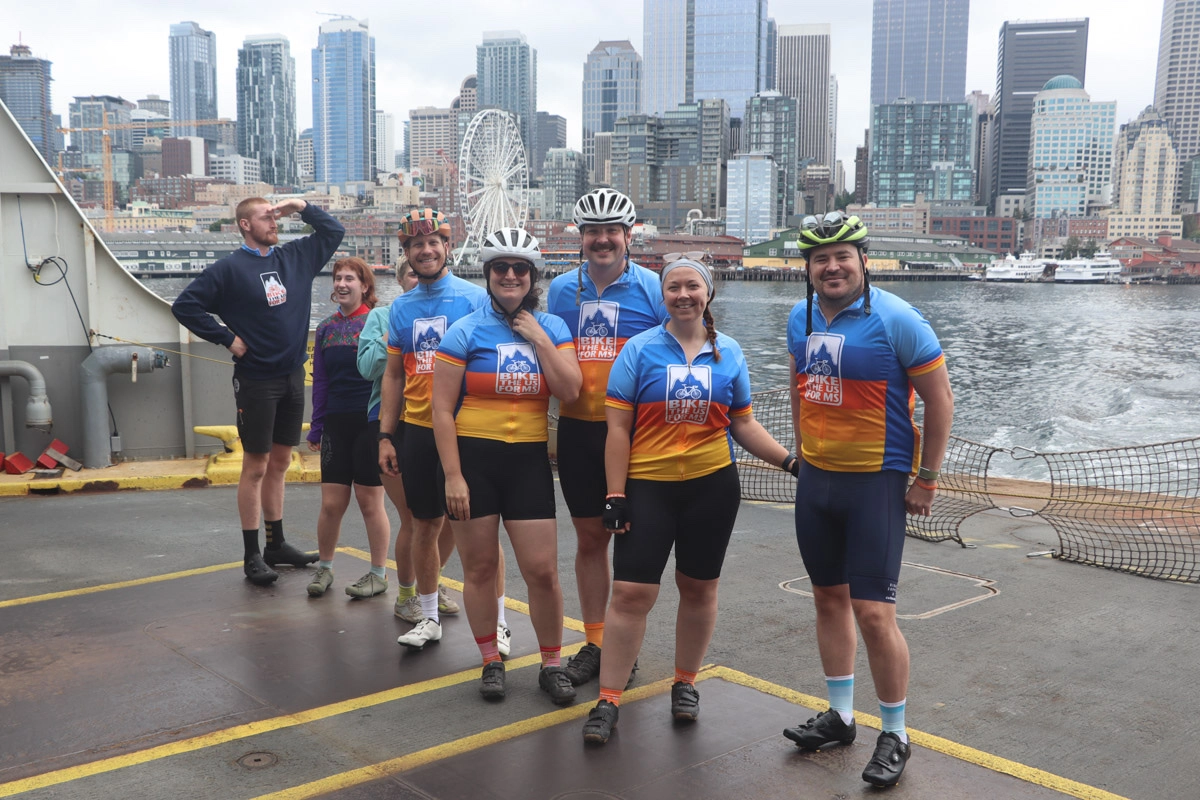
Upon arrival in Bremerton, take the opportunity to grab a bite to eat. There are plenty of options right off the ferry. Once ready, hit the road west out of town then north, hugging the edge of Dyes Inlet. As you leave Silverdale, the urban landscape gives way to quiet rural roads, marking the transition into a more peaceful setting.
Approaching Port Gamble, you’ll cross the Hood Canal Floating Bridge. Be prepared for a short, but steep climb immediately after the bridge. Continue weaving your way through the quaint coastal town of Port Ludlow, enjoying the charm and tranquility of this picturesque area.
If you’re following the Adventure Cycling Association (ACA) maps, as you ride through Port Hadlock-Irondale, you’ll encounter a spur. Here, you have the choice to follow the alternate route towards Port Townsend, which turns into a gravel trail, or continue west. We opted for a road option towards Port Townsend to avoid the trail.
Camping near Port Townsend
End your day by setting up camp at the lovely Fort Townsend State Park. Nestled in a serene setting, it’s an ideal place to relax and reflect on the day’s journey. If you’re eager for more exploration, Port Townsend is just a few miles further and offers a fascinating history of Native American roots and Victorian architecture to round off your first day of the Olympic Peninsula loop.
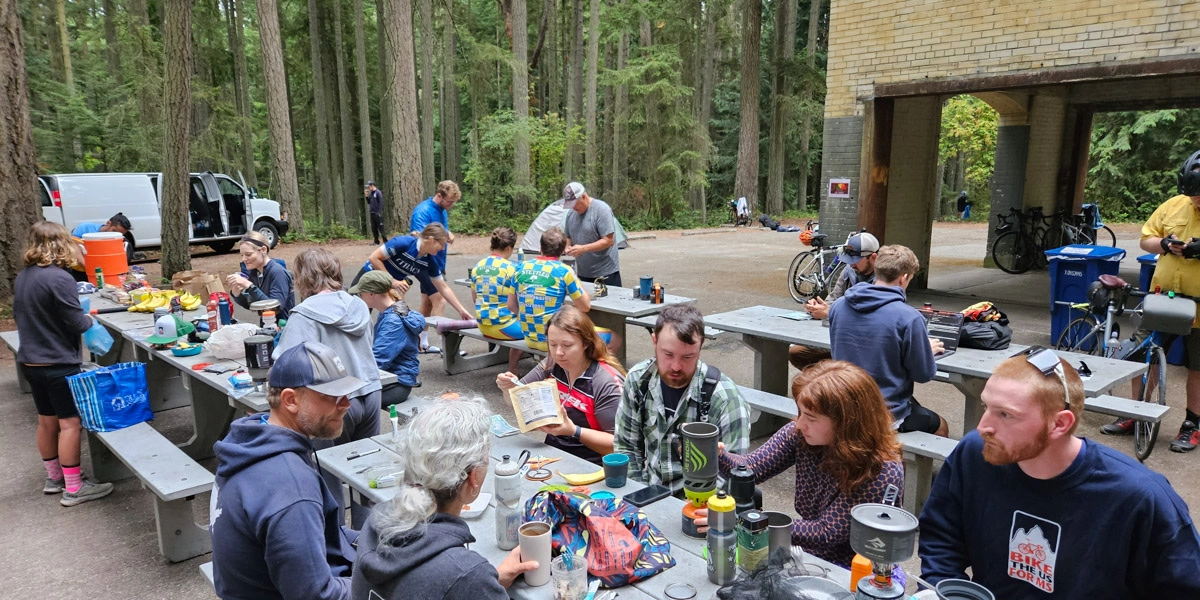
Day 2: Fort Townsend to Port Angeles – 54 miles
Begin your morning by retracing the route southwards around Discovery Bay. The day’s ride promises a blend of coastal charm and rural trails.
As you reach Sequim Bay, you’ll join the Olympic Discovery Trail. This trail will be your guide all the way to Port Angeles, taking you through the northeastern tip of the Olympic Peninsula. As you pass through Sequim, take a moment to appreciate the region’s famous lavender farms, an iconic feature of the area known for their stunning purple hues and delightful aromas.
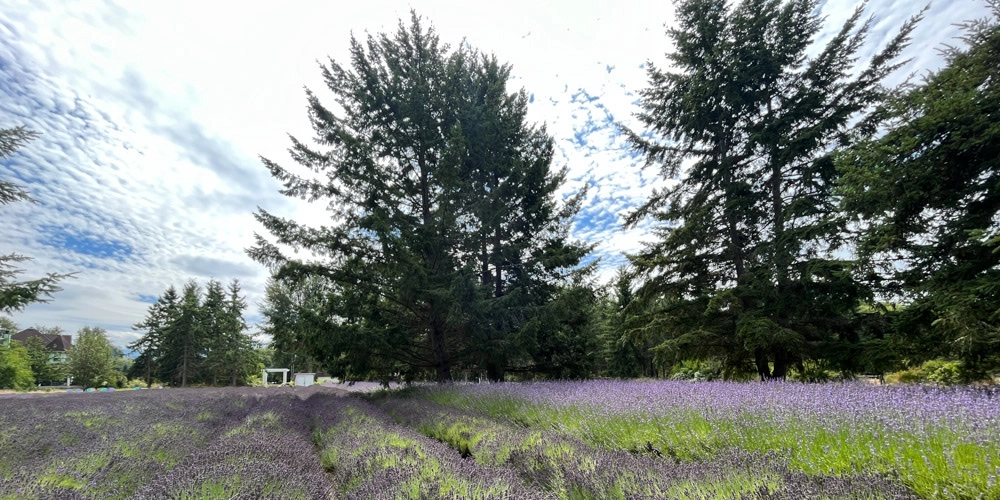
Sequim is your best bet for a lunch stop or coffee break with plenty of options in town. There are also grocery stores if you need to stock up on any items for the coming days. No need to stress though, Port Angeles is to come so you won’t be too rural yet.
Continuing along the Olympic Discovery trail, it eventually links up with the water’s edge as you approach Port Angeles. This part of the journey offers splendid ocean views. As you pedal along, the sound of waves and the expansive vista of the ocean accompany you, leading you into the harbor of Port Angeles.
In 2023, our group were fortunate enough to be hosted by a local school, however there are plenty of accommodation options. There are many reasonably priced hotels along 1st St and Front St. If you’re solo touring and looking for camgrounds, they’re more limited, however there are a couple of RV parks in town worth contacting and if not there is a KOA east of town and Elwha R.V. Park & Campground a few miles further on route.

Day 3: Port Angeles to Forks – 67 miles
The longest day of the week kicks off by returning to the Olympic Discovery Trail, heading west out of Port Angeles. You’ll soon reach the Elwha River, which marks the end of the trail. Here, a decision awaits: while some riders choose the Olympic Highway 101 towards Lake Crescent, we recommend the safer and still scenic ACA route on Strait of Juan de Fuca Hwy 112.
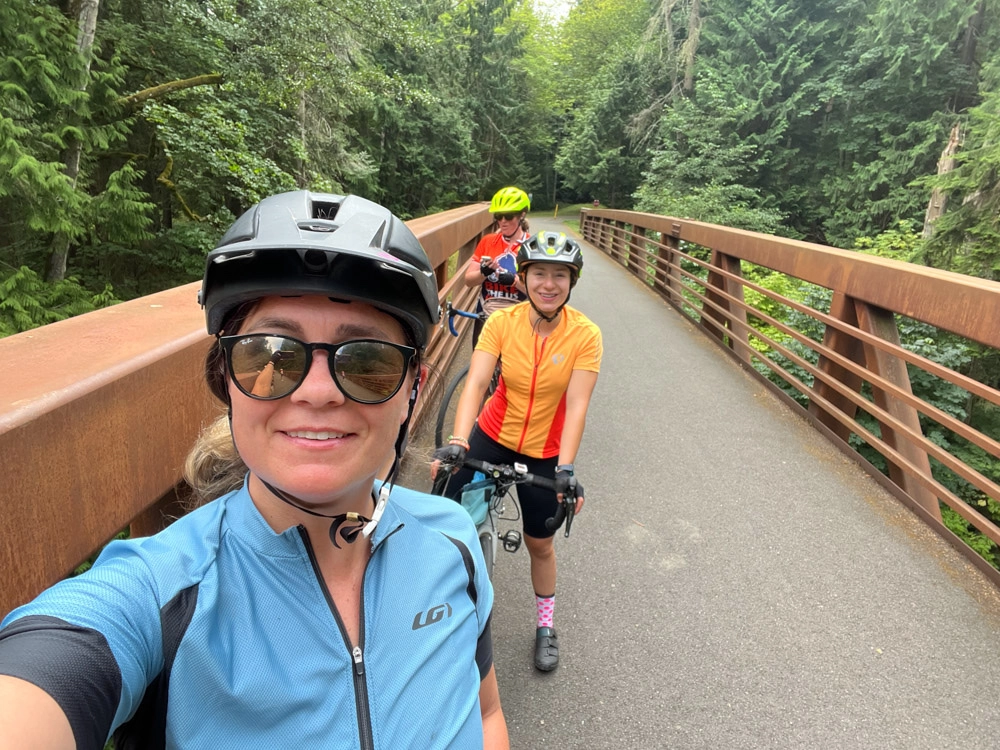
Although Lake Crescent feels like a tough one to miss with it’s gorgeous blue waters and mountain backdrop, the stories over the years of cycling around the lake on 101 don’t sound inviting. High levels of fast moving traffic are often reported, causing cyclists to feel intimidated and fearful. Not the type of riding I enjoy personally.
Naturally, when taking on your own adventure, this is a decision for you to make based on your comfort levels. Our teams take the coastal route around Twin which is beautiful and much quieter, making for a more enjoyable day’s riding.
As the route veers inland, follow the meandering Pysht River before turning south towards Beaver Lake. This leg of the journey offers a tranquil ride through the high trees.
Your 3rd day of the Olympic Peninsula loop concludes in Forks, a town famed for its dense forests and being the setting of the “Twilight” series. Forks is a perfect blend of cultural significance and natural splendor, offering a peaceful retreat after a day of exhilarating riding.
There are plenty of campgounds and RV parks in Forks, as well as hotels. Watch for hotel prices in peak months as Forks has an unsurprising level of tourist traffic following the Twilight series.
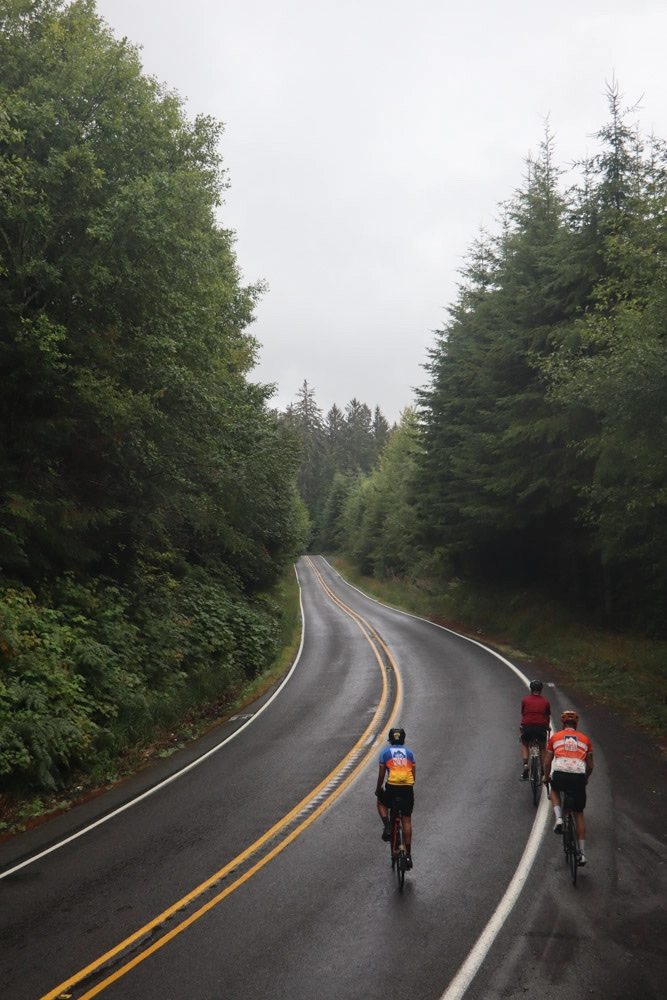
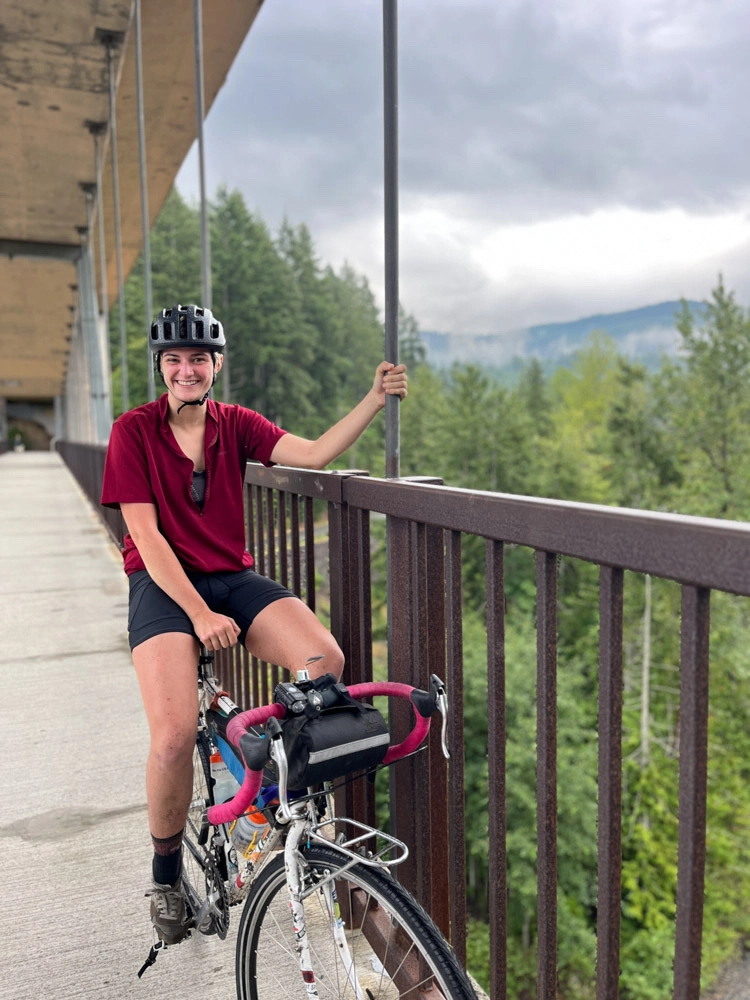
Day 4: Forks to Kalaloch – 30 miles
Day 4 is a leisurely ride designed to allow plenty of time to immerse yourself in the splendors of the West Coast. Departing from Forks, head south and ride through the verdant Bogachiel State Park, a prelude to the day’s wonders.
Next, you’ll reach the Hoh Rainforest in Olympic National Park, a temperate rainforest teeming with lush greenery and rich biodiversity. Being a short day, take the time to explore the Hoh River, which can be accessed just off the main road at Hoh Ox Bow Campground. There are other access points and enchanting trails to explore and absorb the tranquility. Don’t lose track of time as you have the coast to see next!
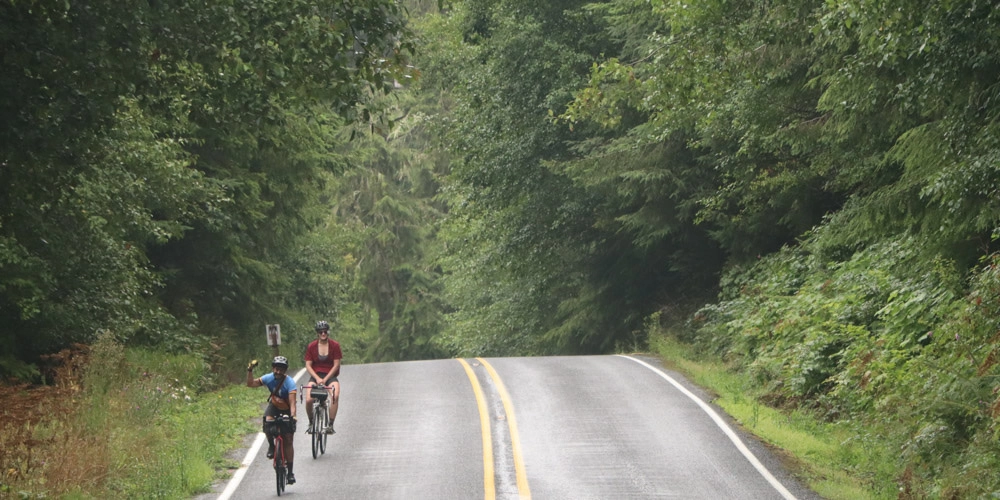
The route then leads you to the dramatic Ruby Beach. It’s worth stopping to walk down the cliffs to the beach, where the Pacific Ocean’s majesty unveils itself. Watch for traffic here as many visitors are turning in and out of the parking lot at Ruby Beach. It’s worth noting there are public restrooms here too.
As you continue along Kalaloch, numerous beaches (Kalaloch Beach 1 through 4) and hiking trails invite exploration. Don’t miss the famous “Tree of Life,” an iconic tree and root system clinging to the edge of the cliffs.
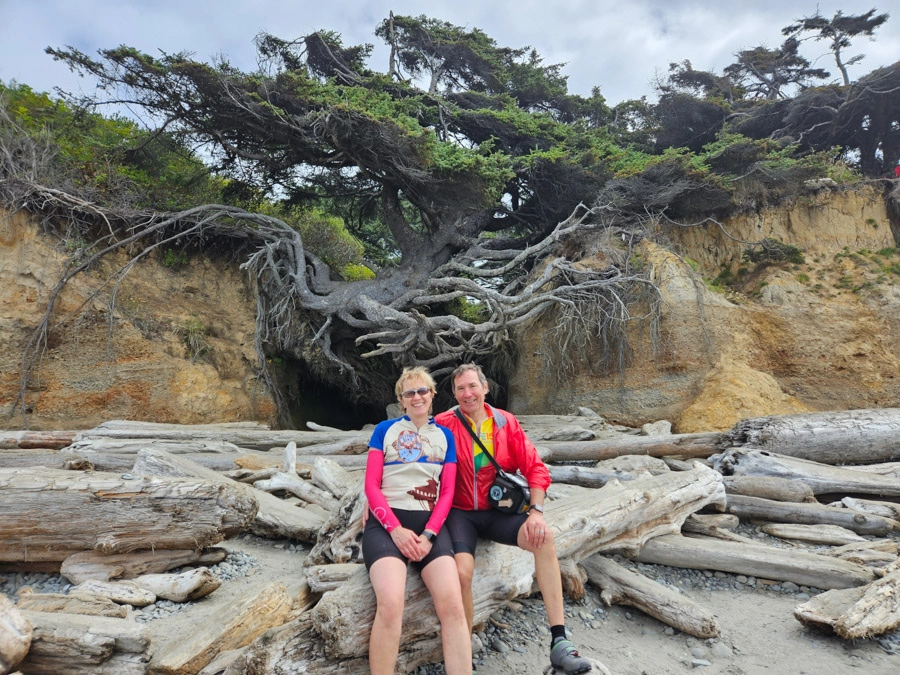
For camping, Kalaloch offers several picturesque options, including South Beach Campground and Kalaloch Campground. There is also Kalaloch Lodge if you’re looking for a roof over your head. Be mindful to book in advance for whichever option you choose, especially during peak seasons. This part of your adventure is a chance to connect deeply with the coastal beauty of the Olympic Peninsula.
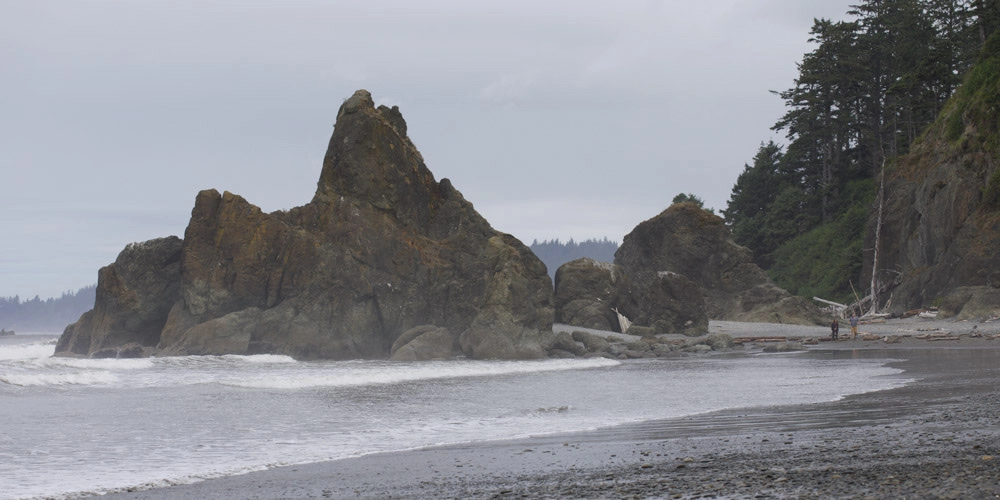
Day 5: Kalaloch to Aberdeen Gardens – 64 miles
Day 5 marks the journey back inland starting from Queets. A pivotal moment of the day is a visit to Lake Quinault. Here, take a worthwhile detour to the lake’s shore to marvel at the World’s Largest Sitka Spruce, a testament to the grandeur of nature. Be warned, it’s downhill to the lake from 101 so expect a steady climb back out.
The route continues along Highway 101, which boasts a good shoulder, making for a comfortable and safe ride. As you pedal, be enveloped by the dense, green forests that line the road, providing a serene backdrop to this leg of your cycling adventure.
Campgrounds are few and far between in this stretch of the Olympic Peninsula loop. You may be best shortening this day and staying in Humptulips or extending to Aberdeen or Montesano for accommodation. Be sure to plan ahead for this day as you don’t want to get stuck with no options.
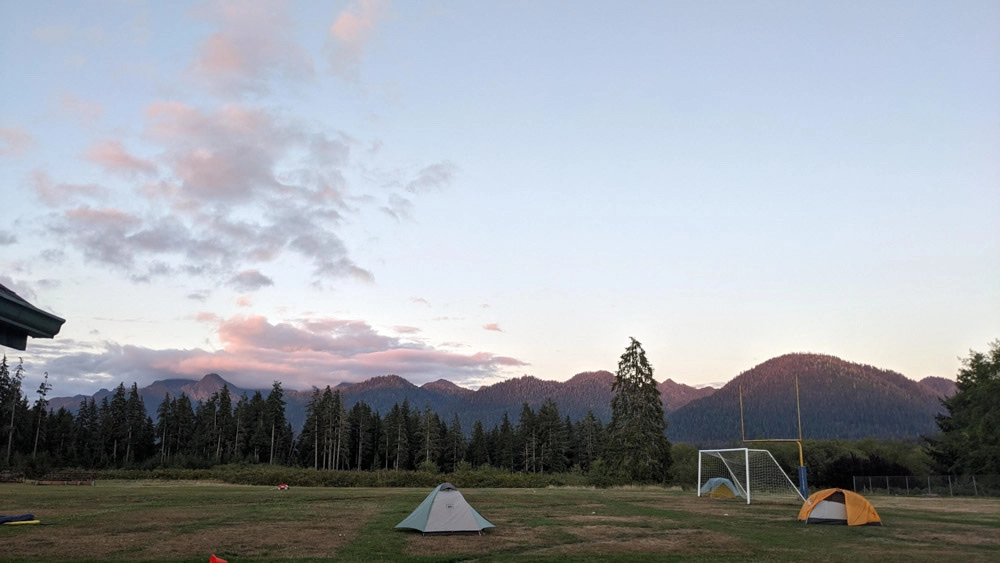
Day 6: Aberdeen Gardens to Shelton – 53 miles
Day 6 sees you continuing south towards Montesano, the southernmost point of the loop. Montesano is a charming spot, ideal for a hearty second breakfast or an early lunch, offering a quaint break in your journey.
As you leave Montesano, you’ll pass through the town of Elma, another opportunity to experience local life along the route.
The journey then takes you back into the tranquility of rural, tree-lined roads, leading towards Shelton. Shelton is a good size town, however a lacking again in campgrounds. Your best bet is Prancing Unicorn a little south of town or looking at host options on the ACA maps.
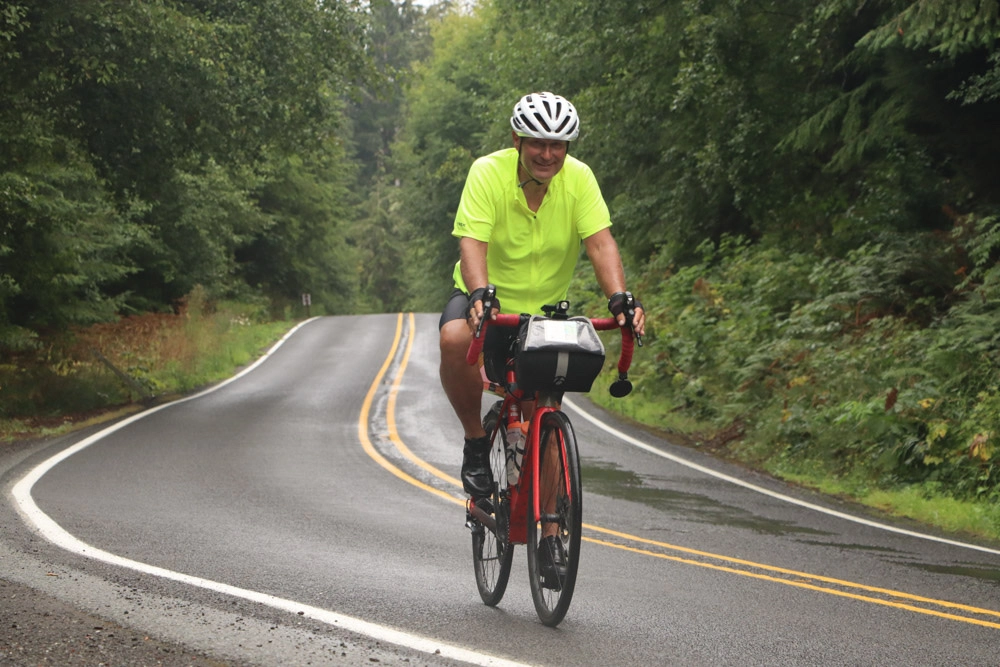
Day 7: Shelton to Seattle – 43 miles plus ferry
On this final day, your route from Shelton to Bremerton mirrors the Pacific Coast Bike Route, but in reverse. The day begins with a challenging climb out of Shelton, a potential early test for the legs.
The road meanders around Mason Lake with a rewarding descent towards Lynch Cove. As you reach Belfair, it’s an opportune moment for food and rest before the final push to Bremerton.
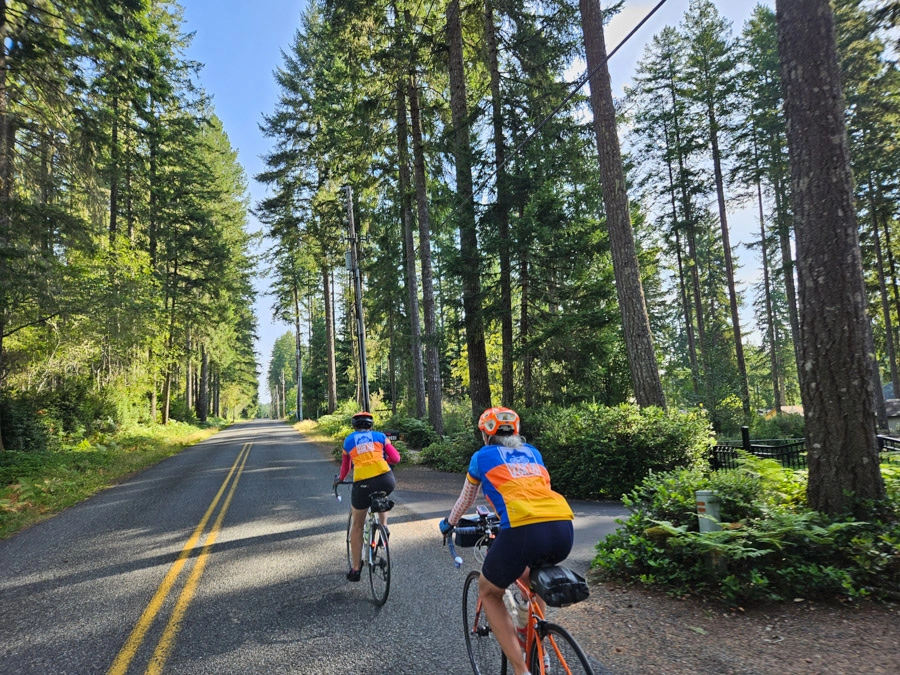
Navigating this stretch requires attention, especially as it intersects the busy WA-3. Be sure to keep your map handy to manage the on and off-ramp transitions smoothly. As you near Puget Sound Naval Shipyard, take in the impressive views of warships and aircraft carriers, a remarkable sight along the route.
Your journey culminates with a ferry ride from Bremerton back to Seattle, marking the completion of an adventurous week cycling around the Olympic Peninsula Loop.
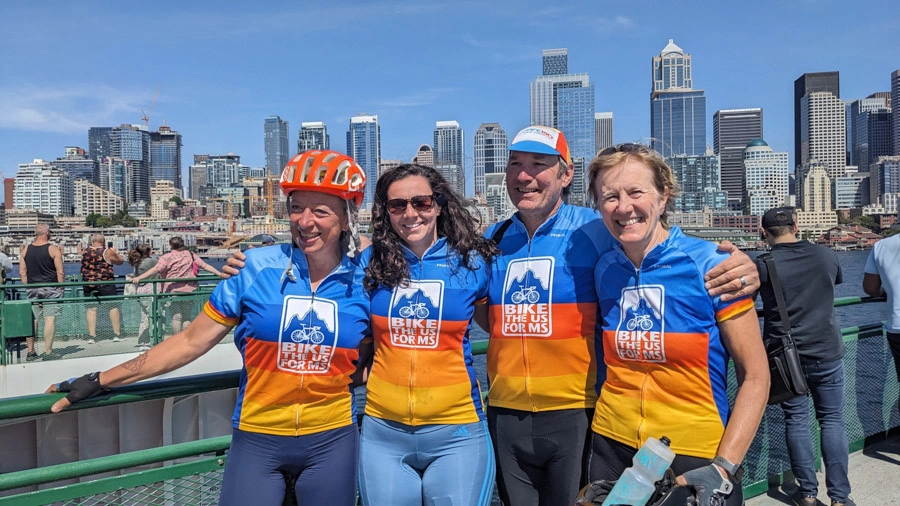
Planning Your Olympic Peninsula Adventure
When is the best time to cycle the Olympic Peninsula Loop?
The best time of year to ride the Olympic Peninsula Loop is typically between late spring and early fall. For example, we tend to take on the route at the end of June. This period usually offers the most stable weather conditions, with July and August being particularly favorable. However, it’s important to be prepared for rain, as this region is known for its lush, rain-fed landscapes.
Travelling to the Olympic Peninsula?
The great thing about the route starting and ending in Seattle is that it make the logistics of traveling much, much easier! You can fly in to SeaTac, jump on the light rail and be in downtown Seattle with ease. There are also train options and many long stay options for parking your vehicle for the week.
If you’re traveling with a bike box or excess luggage that you don’t want to ride with, you can leave it all in Seattle, whether at your hotel or a storage facility, and collect it at the end of the week. Much easier than an A to B route where you have to ship gear to the end!
What gear do I need for the ride?
I won’t go into every item of clothing you could need on a bike adventure like this, but my top piece of advice is make sure what you do bring is waterproof. Even if you’re taking on the route in the peak summer, you can expect rain. Be sure to bring a good waterproof tent to allow you to sleep at night, waterproof cycling jacket and pants if you have them. And also warm cycling gear for those colder, foggy mornings!
Speaking of fog, don’t forget your bike lights! Even if you don’t plan to ride at night, we had waves of fog rolling in off the ocean throughout many days of the ride. Make sure you can be seen by cars and trucks on the route, especially some of the sections on 101 when on the Eastern stretch of the loop.
With the hills on the route, make sure you have a sensible set of gearing on the bike. Trust me, you’ll be glad you put on an extra small front chain ring at times. Some of the climbs are challenging, especially if you’re carrying your gear.
Join Bike the US for MS on their Olympic Peninsula Bike Tour
Is taking on the route solo feeling a little daunting or is planning the overnight accommodations seeming a chore? Why not join us for the Olympic Peninsula Bike Tour in June? We are a low cost, supported bike tour where roughing it is embraced. We’ve created a fun, friendly environment where the key is enjoying the ride the way you want to.
The itinerary you’ve read above is the route we take and has been adapted from our experiences of taking on the loop for the first time last summer. You can expect a small team of 20 or so riders, a set of experienced route leaders helping you achieve your goal of cycling the Olympic Peninsula loop.
Not only will you embark on an unforgettable cycling journey, but you’ll also support a meaningful cause with Bike the US for MS. Register today and be part of this extraordinary adventure!
